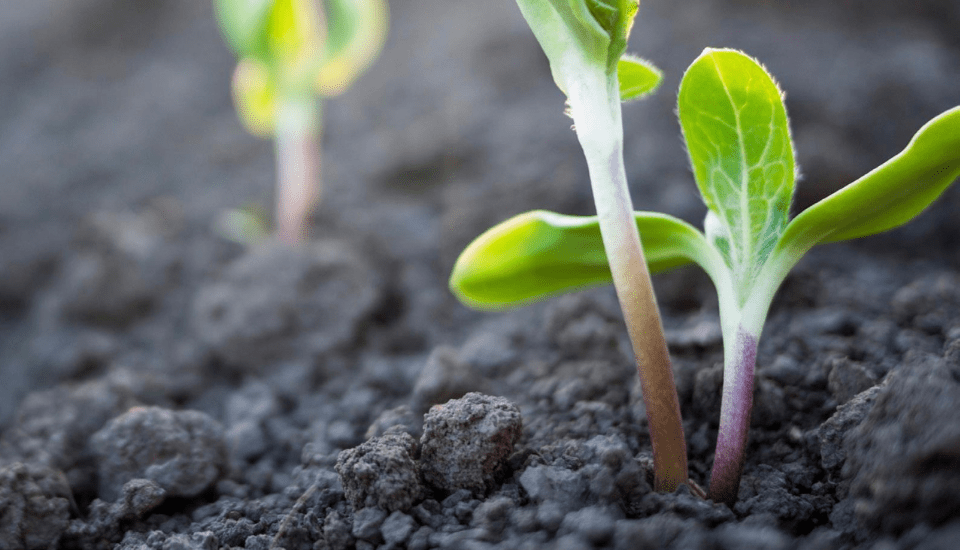
Environmental Monitoring of Nitrates and Other Water Quality Parameters: pH,
Environmental Monitoring of Nitrates and Other Water Quality Parameters: pH,...

The characteristics of soil play an important role in the health of a plant. For commercial gardeners and hobbyists alike, the measurement of soil pH can help one better understand the availability of nutrients, permeability of the soil, and the types of plants that can be grown. The pH of soil depends on many environmental factors. Alkaline soils are characterised by the accumulation of soluble salts and carbonates, and are often found in areas that are rich in limestone. Acidic soils are characterised by the presence of free hydrogen and aluminium ions, and may be caused by acid rain, fertiliser application, or decomposing organic matter. Most natural soils have a pH ranging from pH 4.0-8.0, depending on the geology of the area.
One of the key factors in plant growth is the availability of macronutrients and micronutrients. The availability of both macro and micronutrients is directly related to pH. The pH of soil and nutrient solutions will determine the solubility of the nutrients. Soils that have a pH of 4.0 to 5.0 are considered to be strongly acidic; within this acidic range, the solubility of minerals such as aluminium, iron, and manganese increases and can become toxic to plants. Soils that have a pH greater than pH 8.0 or 9.0 are considered to be strongly alkaline; at this pH range, the nutrients that plants need to grow are not soluble and available for uptake. While the optimum pH value for nutrient uptake is dependent on the species of plant being grown, the majority of plants thrive in a soil that is slightly acidic. It is also important to note that there are optimum pH values for beneficial soil bacteria, such as bacteria that convert atmospheric nitrogen (N₂) into plant available soil nitrogen (NH₄+). These nitrogen-fixing bacteria live on the root hairs of legumes and thrive at an optimum pH range between pH 6.0 and 8.0.
| Vegetable Plants | Optimal pH |
| Artichoke | 6.5-7.5 |
| Asparagus | 6-8 |
| Barley | 6-7 |
| Bean | 6-7.5 |
| Brussels Sprout | 6-7.5 |
| Corn (Maize) | 6-7.5 |
| Cucumber | 5.5-7.5 |
| Early carrot | 5.5-7 |
| Early Potato | 4.5-6 |
| Egg Plant | 5.5-7 |
| Late carrot | 5.5-7 |
| Late Potato | 4.5-6 |
| Lettuce | 6-7 |
| Melon | 5.5-6.5 |
| Oat | 6-7 |
| Onion | 6-7 |
| Pea | 6-7.5 |
| Pepper | 6-7 |
| Pumpkin | 5.5-7.5 |
| Rice | 5-6.5 |
| Soybean | 5.5-6.5 |
| Spinach | 6-7.5 |
| Strawberry | 5-7.5 |
| String Beans | 6-7.5 |
| Sugar beet | 6-7 |
| Sunflower | 6-7.5 |
| Sweet Potato | 5.5-6 |
| Tomato | 5.5-6.5 |
| Watermelon | 5.5-6.5 |
| Wheat | 6-7 |
| Garden/Flower Plants | Optimal pH |
| Acacia | 6-8 |
| Acanthus | 6-7 |
| Amaranth | 6-6.5 |
| Bougainvillea | 5.5-7.5 |
| Dahlia | 6-7.5 |
| Erica | 4.5-6 |
| Euphorbia | 6-7 |
| Fuchsia | 5.5-7.5 |
| Gentian | 5-7.5 |
| Gladiolus | 6-7 |
| Hellebore | 6-7.5 |
| Hyacinth | 6.5-7.5 |
| Iris | 5-6.5 |
| Juniper | 5-6.5 |
| Ligustrum | 5-7.5 |
| Magnolia | 5-6 |
| Narcissus | 6-8.5 |
| Oleander | 6-7.5 |
| Paulownia | 6-8 |
| Portulaca | 5.5-7.5 |
| Primula | 6-7.5 |
| Rhododendron | 4.5-6 |
| Roses | 5.5-7 |
| Sedum | 6-7.5 |
| Sunflower | 6-7 |
| Tulip | 6-7 |
| Viola | 5.5-6.5 |
| Orchard Plants | Optimal pH |
| Apple | 5-6.5 |
| Apricot | 6-7 |
| Apricot | 6-7 |
| Cherry | 6-7.5 |
| Grapefruit | 6-7.5 |
| Grapevine | 6-7 |
| Lemon | 6-7 |
| Nectarine | 6-7.5 |
| Orange | 5-7 |
| Peach | 6-7.5 |
| Pear | 6-7.5 |
| Plum | 6-7.5 |
| Pomegranate | 5.5-6.5 |
| Walnut | 6-8 |
Environmental Monitoring of Nitrates and Other Water Quality Parameters: pH,...
Salt Concentration In A Brine Solution For Curing Salmon Traditionally,...

To empower customers to achieve quality by supplying intuitive, accurate, and reliable analytical instruments with exceptional customer service and value.
We take pride in every product we build. From an original idea to a completed product ready for testing. We oversee every aspect of the manufacturing process. It is this level of attention to detail that sets us apart.
To empower customers to achieve quality by supplying intuitive, accurate, and reliable analytical instruments with exceptional customer service and value.
We take pride in every product we build. From an original idea, to a completed product ready for testing. We oversee every aspect of the manufacturing process. It is this level of attention to detail that sets us apart.
To empower customers to achieve quality by supplying intuitive, accurate, and reliable analytical instruments with exceptional customer service and value.
We take pride in every product we build. From an original idea, to a completed product ready for testing. We oversee every aspect of the manufacturing process. It is this level of attention to detail that sets us apart.

